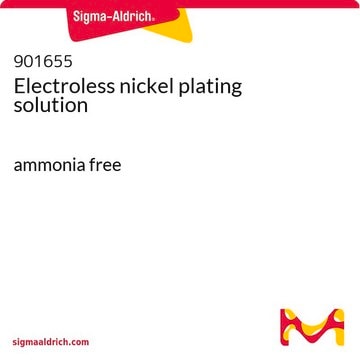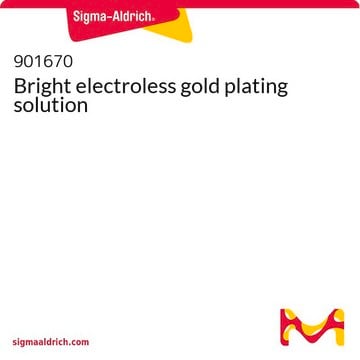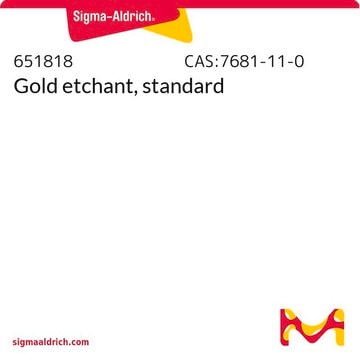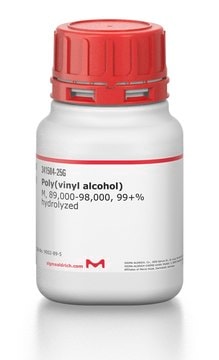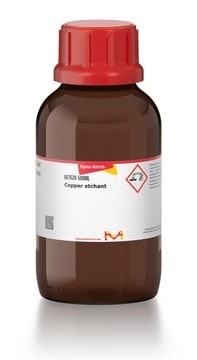Unfortunately, a specific protocol is not available for this product. However, working parameters are listed below:
Recommended Products
form
liquid
color
colorless
pH
>10
General description
- Operating temperature: 90 °C
- Plating time: 5-10 minutes
- Tank: Pyrex glass
signalword
Danger
hcodes
Hazard Classifications
Acute Tox. 3 Oral - Aquatic Chronic 2
Storage Class
6.1D - Non-combustible acute toxic Cat.3 / toxic hazardous materials or hazardous materials causing chronic effects
wgk_germany
WGK 3
flash_point_f
Not applicable
flash_point_c
Not applicable
Choose from one of the most recent versions:
Already Own This Product?
Find documentation for the products that you have recently purchased in the Document Library.
Customers Also Viewed
-
Do you have instructions for use available?
1 answer -
What are the main solvents used in this solution? I am uncertain as to what to write on the hazardous waste disposal tag in terms of percentages. Thanks!
1 answer-
Unfortunately, the chemical composition of this product is considered proprietary. However, any hazardous ingredients are listed in the product Safety Data Sheet (SDS), Section 3.
Please refer to this document to review the available information.Helpful?
-
-
2 questions: Does this work on silver metal? (i.e. growing Ag on top of Ag) Does this only replace the top metal layer with Ag, or does it actually grow/deposit a Ag layer? In other words, is there any thickness control? Thank you very much!
1 answer-
As mentioned in the "Properties" section, this product was designed to produce a bright silver plating on copper, brass, and copper alloys. This silver plating solutions should work on silver as well, however, it will depend on the degrees of adhesion.
The silver ions will attach to the surface of the metal layer. The plating process occurs by an electrochemical reaction. For example, when the silvering solution is applied to a clean copper surface, two electrochemical half-reactions occur. Silver ions in solution coming from silver chloride are reduced to silver metal that is well adhered to the copper surface. At the same time, the copper metal is oxidized (it corrodes) to form copper ions in solution. This is a galvanic effect where the more active metal (copper) is oxidized and the ions from the more noble metal (silver) are reduced. Because the copper causes the silver ions to be reduced, the copper acts as the reducing agent. The simplified form of the overall reaction is as follows:
Ag+ + Cu0 → Ag0 + Cu+
We have not tested the thickness control for this item and can not validate that information for this product, however information on thickness recommendation for Silver plating is as follows:
Minimum- 7.6 microns for soldered articles
12.7 microns for corrosion protection of nonferrous basis metals & to increase the electrical conductivity of those metals
2.7-254 microns for electrical contacts, depending on factors such as pressure, friction and electrical loadHelpful?
-
Active Filters
Our team of scientists has experience in all areas of research including Life Science, Material Science, Chemical Synthesis, Chromatography, Analytical and many others.
Contact Technical Service